How to Make Potting Soil for Hibiscus (Step-by-Step Guide)
-

- Last updated:
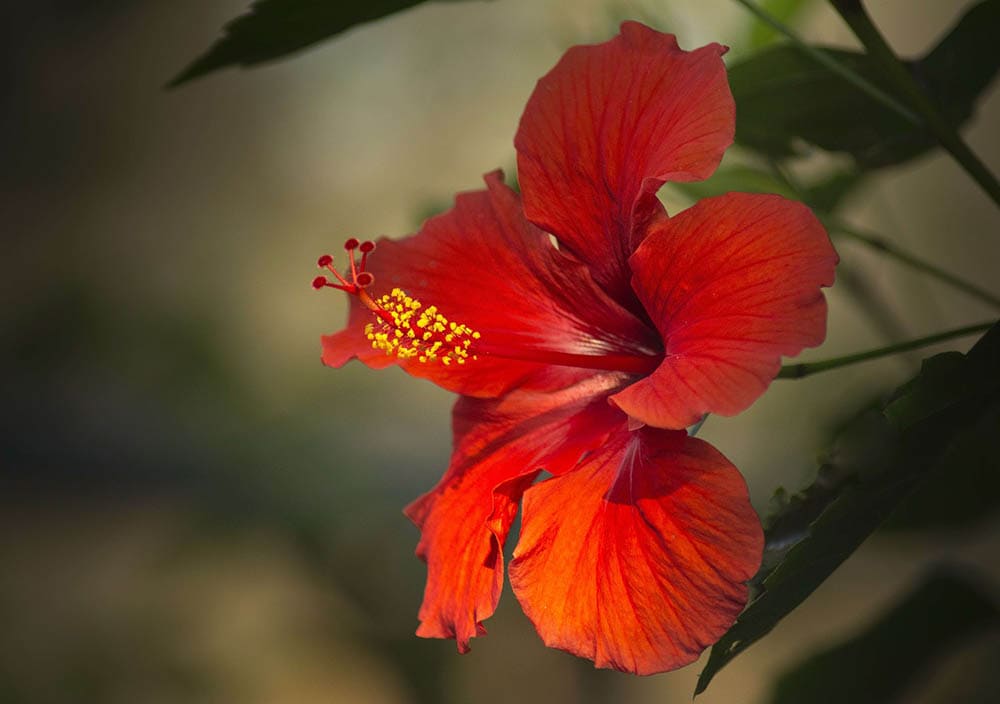
Hibiscus plants have beautiful and versatile flowers that add a tropical touch to any garden. However, growing hibiscus plants can be a bit tricky, particularly when it comes to finding the right potting soil.
Fortunately, you can opt to make your potting mix at home to ensure that your hibiscus plants have the proper nutrients and drainage they need to thrive. The process is simple, cost-effective, and will give you the satisfaction of growing healthy hibiscus plants.
In this blog post, we will show you how to make potting soil for hibiscus plants. We’ll also tell you the best soil mix, pH, and compost. Keep reading to learn more!
What’s the Best Soil Mix for Growing Hibiscus?
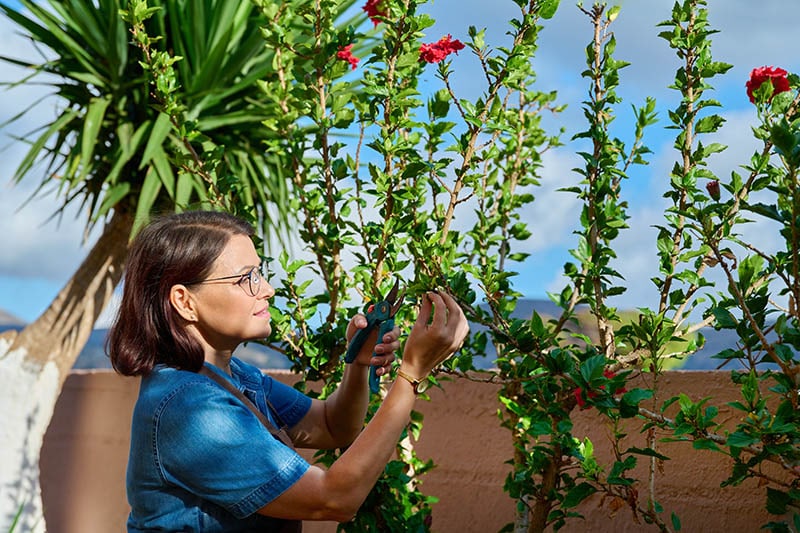
Hibiscus is a genus of flowering plants in the mallow family, Malvaceae. They are native to warm-temperate, subtropical, and tropical regions worldwide.
Hibiscus plants prefer well-draining, nutrient-rich soil. You can make a good soil mix for growing hibiscus plants by combining equal parts peat moss, perlite, and coarse sand or vermiculite.
This mixture allows for good drainage while retaining moisture and providing necessary nutrients. It’s also crucial to ensure the soil is moist but not water-logged. Hibiscus plants are prone to root rot. So, don’t grow them in water-logged soil.
Besides, don’t grow hibiscus plants where there’s plenty of sand. Sandy soil drains too fast. Consider adding clay to the sandy soil to ensure the water doesn’t drain fast.
You can also add a slow-release fertilizer in spring and summer. The fertilizer provides the necessary nutrients for optimal growth and blooming.
Ideal Soil pH for Growing Hibiscus
The best soil pH for growing hibiscus should be between 6.5 and 6.8 (slightly acidic to neutral). Always check the soil pH before planting the hibiscus. If the soil pH is too high or too low, there are several ways to mitigate it.
If you want to reduce the soil pH, mix it with a sulfur mixture such as aluminum sulfate or sulfur. You may also find that the soil pH is too low to grow hibiscus plants. If so, mix the soil with lime. You can get lime in substances like ground agricultural limestone or dolomite.

Soil Composting for Hibiscus
Hibiscus plants are heavy feeders, so they need soil rich in nutrients. The plant will bloom well in nutritious soil. Make sure you compost the plant often if it grows in nutritious soil. Add organic matter or compost to the soil to increase soil fertility.
You can also use fertilizers high in potassium and nitrogen but low in phosphorus. Also, check the soil’s fertility using a soil test kit before you plant hibiscus.
Other sources of soil nutrients include banana peels and wood ash. Wood ash is an excellent source of natural potassium.
Step-By-Step Guide for Making Potting Soil for Hibiscus
1. Mixing peat moss, soil, and perlite or vermiculite
This homemade potting soil will provide the necessary nutrients and support for your hibiscus plants to thrive. It’s crucial to note that you should use a well-draining soil mix. Don’t use garden soil as it can be too dense and retain too much water to harm your hibiscus.
- Take two parts peat moss, two parts soil, and one part perlite or vermiculite.
- Combine the peat moss and soil in a large mixing container.
- Add the perlite or vermiculite and mix well. The perlite or vermiculite improves drainage and aeration in the soil
2. Using peat moss, potting soil, and worm castings or compost
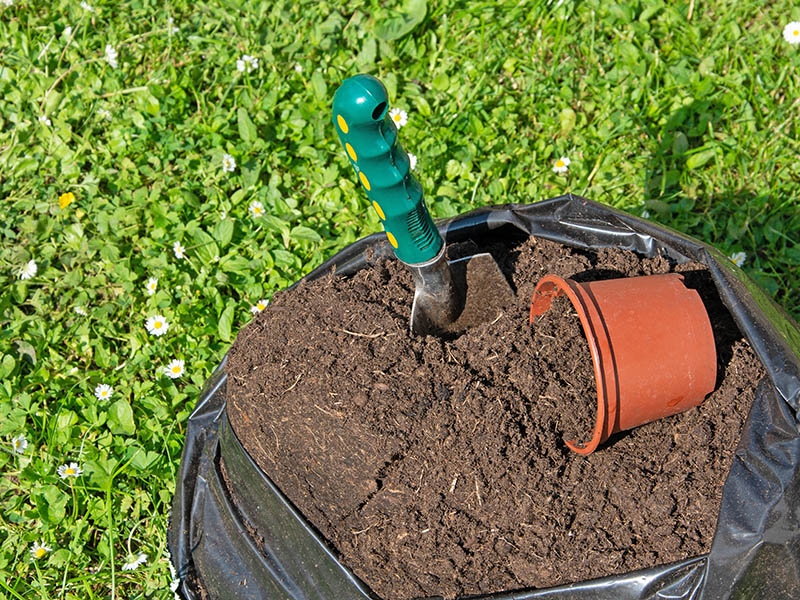
- In a large mixing container, combine 1/3 potting soil, 1/3 peat moss, and 1/3 worm castings or compost.
- Use a trowel or garden fork to mix the ingredients thoroughly.
- You can also add a slow-release fertilizer to the potting soil mixture. Adhere to the package instructions for the appropriate amount to use.
- Fill the pot with the potting soil mixture and plant your hibiscus.
3. Manure, coarse peat, composted bark, and vermiculite
- Mix equal parts of manure, coarse peat, and composted bark.
- Add a small amount of vermiculite to the mixture to help to improve drainage and aeration in the soil.
- Use a garden fork or a shovel to mix all the ingredients. Once the ingredients are well combined, your potting soil is ready to use.
- Fill your pot with the soil and plant your hibiscus in it.
4. Mix peat, bark, and perlite
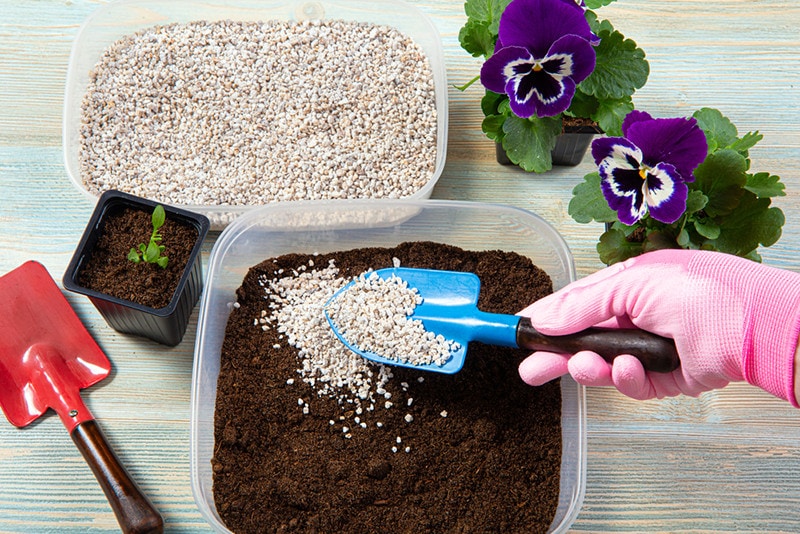
- Mix 50% peat, 45% bark, and 5% perlite.
- Use a garden fork or a similar tool to combine the ingredients. Once the ingredients are well mixed, the potting soil is ready for use.
- Use this soil to repot your hibiscus plants, making sure to water the soil well after planting.
Point to Note: You can adjust the ratio of peat, bark, and perlite to suit your specific needs. Also, ensure the ingredients are clean and debris-free before using the potting soil.
5. Mix compost, soil, and sand
- Start by gathering all the materials (one part compost, two parts soil, and one part sand). Combine them using a shovel or garden fork and mix the ingredients well until the soil is evenly blended.
- Once the potting soil is well mixed, it is ready to use. Plant your hibiscus and water the plant well and give it adequate sunlight.
- Keep an eye on the moisture level and fertilize the plant as needed.
- Check for pests or diseases often. With proper care, your hibiscus plants should thrive in its new potting soil.
6. Mix compost, sand, soil, rice husks or coco peat, and bone meal or stone dust

- Gather all the ingredients: 30% compost, 20% sand, 30% soil, 10% rice husks or coco peat, and 10% bone meal or stone dust.
- Combine the compost and sand and mix them well.
- Add the soil and rice husks or coco peat. Mix again until everything is evenly distributed.
- Finally, add the bone meal or stone dust. Then, mix once more.
- Use this potting soil mixture to fill the pots or containers for your hibiscus plants. Water them well after planting.
NB: Use this soil mix only for indoor or potted plants and not for plants in the ground.
7. Mix soil, river sand, and cow manure or vermicompost
- Start by mixing 60% soil, 10% river sand, and 30% cow manure or vermicompost in a large container.
- Distribute the ingredients evenly using a shovel or rake.
- Add water to the mixture and stir until the soil is evenly moist.
- Allow the soil to sit for a few hours for the water to fully absorb and the ingredients to settle.
- If the soil feels too dry, add more water and mix again.
Once the soil is at the right consistency, it’s ready to use. Besides these ingredients, you can add 30 grams of neem cake powder, 10 grams of potash, 30 grams of mustard cake powder, and 10 grams of superphosphate. This mixture ensures your hibiscus flowers throughout the year.
Factors to Consider When Choosing the Right Potting Soil Mix for Hibiscus
When choosing a potting soil mix for hibiscus plants, there are several factors to consider as seen below:
Pot Type Used
The type of pot you use can affect the drainage and aeration of the potting soil. Clay pots are heavy and can retain moisture.
On the flip side, plastic pots are lightweight and may not provide enough drainage. Consider using a pot with drainage holes and a saucer to prevent water from pooling. Besides, ensure the potting soil you use has excellent drainage.
The Hibiscus Plant’s Watering Requirements

As we mentioned, hibiscus plants prefer well-draining soil. It should be moist but not water-logged. A good potting mix should have a mix of peat moss, vermiculite, and perlite for proper drainage.
If the hibiscus plant needs frequent watering, ensure the potting soil mix you choose has excellent drainage. On the other hand, choose a potting mix that conserves moisture if you want to avoid frequent watering.
The Climate of the Area
If the area has a hot and humid climate, a well-draining soil mix with peat moss, perlite, and vermiculite would be an excellent option.
If you live in an arid climate region, a soil mix with a higher percentage of peat moss and compost to help retain moisture would be more suitable.
Hibiscus Plant Size
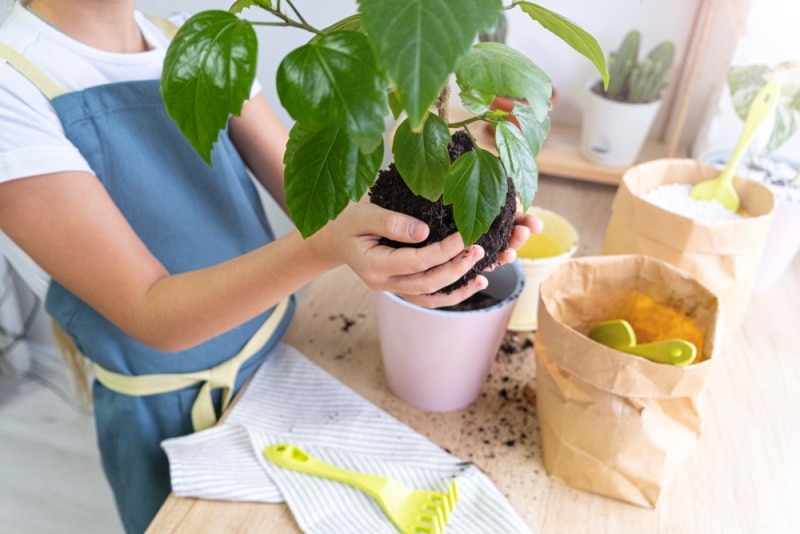
When choosing the right potting soil mix, consider the size of the hibiscus plant. A lighter potting soil mix with an excellent drainage system is ideal for smaller hibiscus plants. It’ll ensure the roots don’t get water-logged.
On the flip side, you may need a more substantial potting soil mix with a higher nutrient content to support the plant’s growth for larger hibiscus plants. Besides, choose a potting mix with excellent moisture retention if you have a large hibiscus plant.
Conclusion
Making potting soil for hibiscus plants is a simple and cost-effective way. It ensures hibiscus plants have the proper nutrients and drainage they need to thrive.
A good potting soil for hibiscus should consist of a mix of peat moss, perlite, and enough vermiculite. It should also have organic matter such as compost or well-rotted manure.
Remember to use well-draining soil and provide enough moisture and nutrients for the hibiscus to thrive. With the right potting soil, your hibiscus plants will be healthy and beautiful for years to come.
See also:
- How to Make Potting Soil for Palm Trees – 4 Simple Tips
- How to Make Potting Soil for Plumeria Plants (Step-by-Step Guide)
Featured Image Credit: IanZA, Pixabay
Contents

